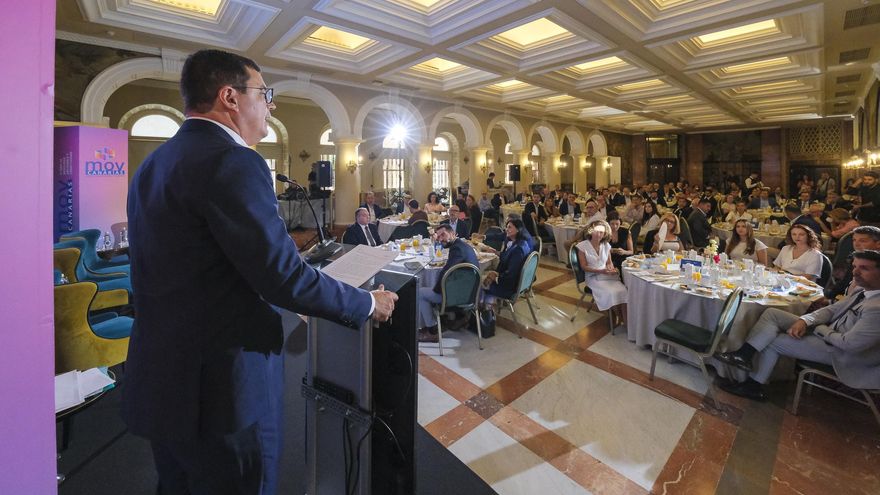Island Governments Ready to Contribute to Rail Funding
The governments of the Canary Islands and the island councils of Gran Canaria and Tenerife are prepared to advance or pay a proportional share of the railway lines on the two capital islands. However, they are holding firm to a protocol that recognizes the “national interest” of the island trains to demand that the Spanish state provide the necessary investment, estimated at over €4 billion over a period of seven to ten years.
The Sustainable Alternative for Island Mobility
The three administrations are clear that trains connecting the capitals to the airports and the southern tourist zones are the “only sustainable alternative” to address increasing population mobility and traffic congestion on the roads. They believe now is the time to push for construction and demand equal treatment from the central government compared to the rest of the national territory in guided land transport.
“It’s true that the percentages haven’t been finalized, but what we have said from the Canarian institutions, both the island councils and the regional government, is that we are predisposed to contribute proportionally to part of the funding; we are not only asking, but we are also going to be in a position to provide funds to make the trains a reality,” stated Pablo Rodríguez, Minister of Public Works, Housing and Mobility of the Canary Islands, this Thursday.
Forum Highlights Railway Connectivity Plans
Rodríguez inaugurated the II Sustainable Mobility and Connectivity Forum, promoted by Prensa Ibérica, at the Hotel Santa Catalina in the Gran Canaria capital. The forum, titled ‘Boost to Railway Connectivity in the Islands: Canaries Unblock Their Projects’, was also attended by the Director General of Transport and Mobility of the regional government, María Fernández; the Minister of Mobility of the Tenerife Council, Eulalia García; and the Insular Director of Transport and Sustainable Mobility of the Gran Canaria Council, Manuel López.
Funding Breakdown and Project Status
Although the contributions of each public administration have remained unclear during the long preparation of these railway lines, the Special Territorial Plans (PTE) for the guided transport corridors do include percentages of 70% from the State, 20% from the Autonomous Community, and 10% from each island council, as recalled by representatives from both councils.
So far, the drafting of the projects has been funded by the central government through the Ministry of Development, with an amount exceeding €20 million on each island. However, the Gran Canaria Council, which is further ahead in the entire process, has already allocated a budget item of €16.7 million in its budgets to begin expropriations by the end of this year or early 2026, once the Environmental Impact Statement is obtained.
Navigating the Political Landscape for Funding
Pablo Rodríguez detailed that Coalición Canaria (CC) has included state funding for both trains in the proposed Royal Decree Law it will send to the central government to fulfill the so-called “Canary agenda”—the agreement between the island nationalists and the PSOE for the investiture of Pedro Sánchez.
Given the complicated national political situation, the first option proposed by the island institutions is for the funding of both railways to be included in the General State Budgets for 2026 through multi-annual allocations until the completion of all works, which could take over a decade.
If the central government fails to secure a majority to approve these budgets, which is the most foreseeable scenario, alternative formulas will be sought under the umbrella of that protocol, which officially and for the first time recognizes that the Canary Islands trains are of national interest.
Creative Funding Solutions and Cost Justification
Among other “creative” solutions, the regional minister and María Fernández cited the signing of the State-Canarias Road Agreement in 2018 as an example, which has enabled numerous works on the road network to date and in the coming years.
There are “other opportunities” to secure state and European funds, such as the future Sustainable Mobility Law being drafted by the central government, through a provision that recognizes the national interest of these railway projects. “We are working on various options, aware of the political reality of the Congress and the State, which has nothing to do with that of the Canary Islands; the two projects exceed €4 billion, but not everything will be done at once, the idea is to develop them in phases,” Rodríguez specified.
Although he acknowledged that the amounts being discussed may seem very high—€1.8 billion for the Gran Canaria train and €2.2 billion for Tenerife—he emphasized the need to shed “inferiority complexes,” pointing out that the Pajares railway variant, connecting the province of León with Asturias, cost €5 billion and is less than 50 kilometers long.

